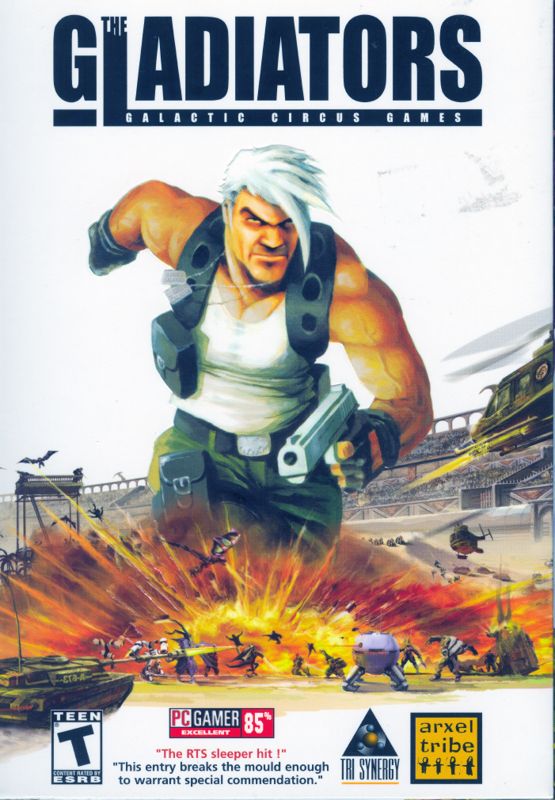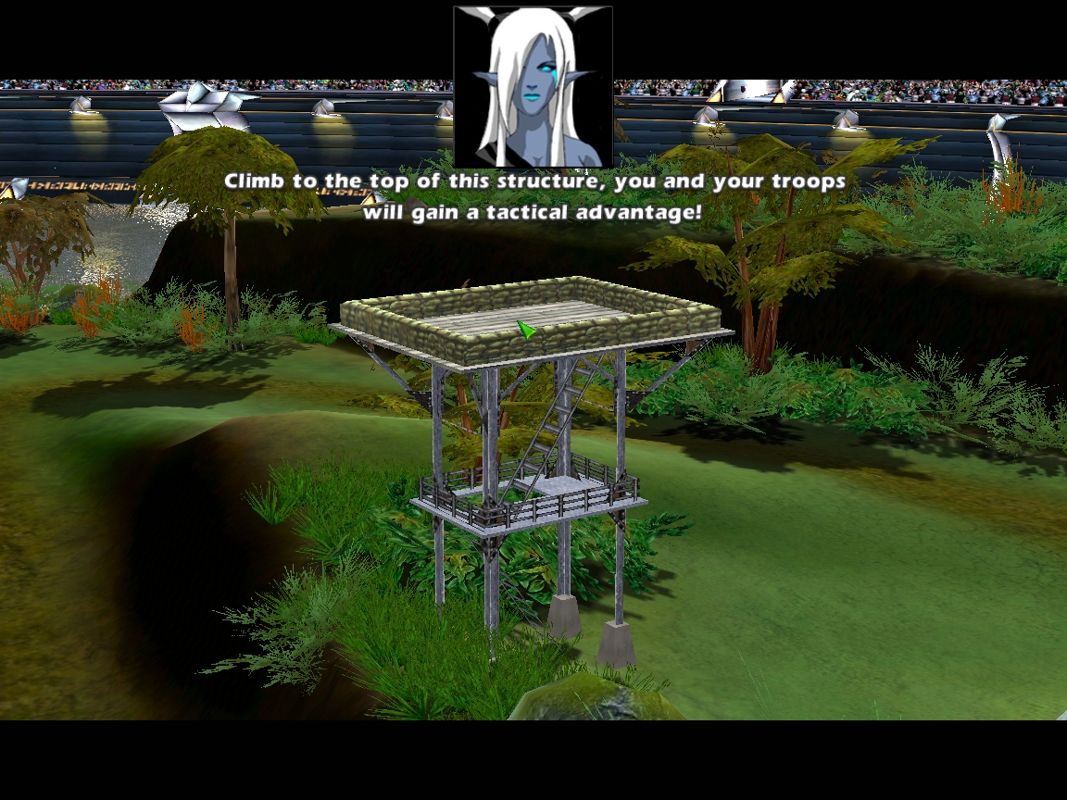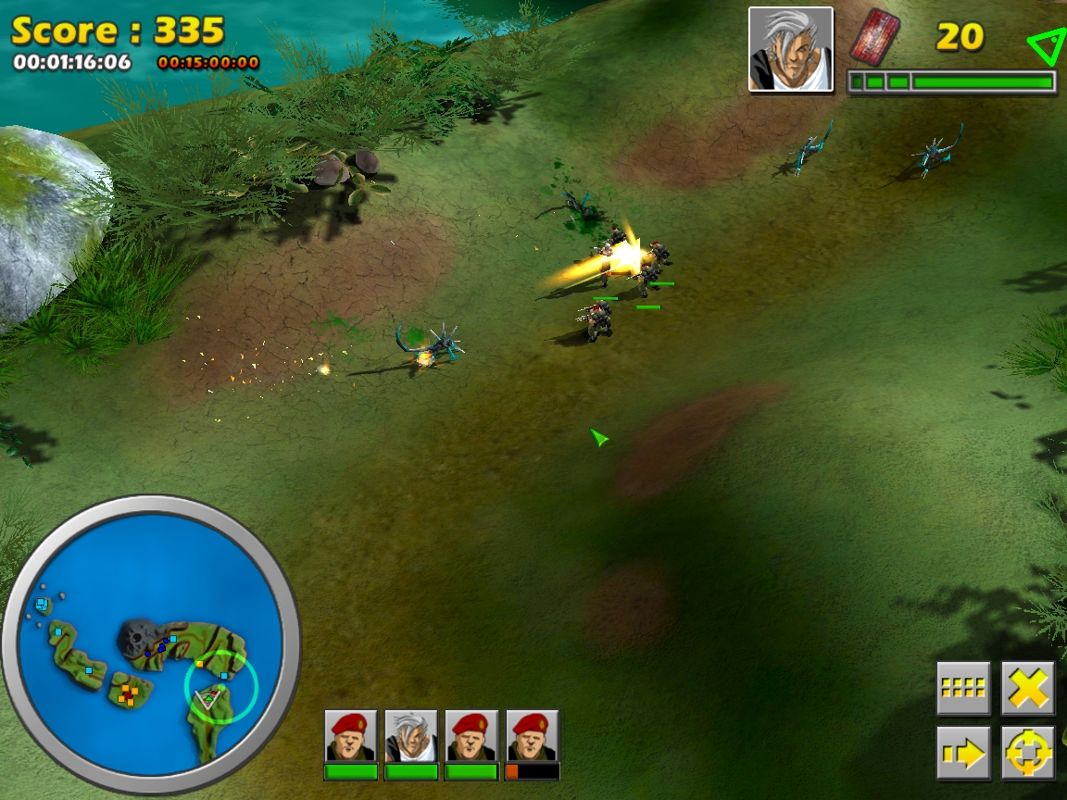Retro Replay Review
Gameplay
The Gladiators: Galactic Circus Games immediately sets itself apart from traditional real-time strategy titles by removing resource gathering and city building elements entirely. Instead, players dive straight into the action with rapid-fire decision making and unit management. Objectives are handed down by the booming arena announcer, ranging from defending fortified strongholds to leading siege assaults, ensuring each level feels fresh and challenging.
(HEY YOU!! We hope you enjoy! We try not to run ads. So basically, this is a very expensive hobby running this site. Please consider joining us for updates, forums, and more. Network w/ us to make some cash or friends while retro gaming, and you can win some free retro games for posting. Okay, carry on 👍)
Players take control of a rotating cast of protagonists across three distinct campaigns: Major Greg D. Callahan, General Maximix, and the enigmatic Fargass “The Magician.” Each character’s arc introduces new unit types and strategic wrinkles, forcing you to adapt your approach as you unlock joker cards for points, which in turn grant access to additional troops or powerful battlefield upgrades. This card-based economy encourages you to balance high-risk maneuvers with careful preservation of your resources.
Key gameplay features such as the absence of fog of war and an advanced “Line of Vision” system elevate tactical depth. You can perch snipers on rooftops or hide infantry in dense foliage to stage devastating ambushes. The ability to destroy walls, floors, and other battlefield elements adds another layer of strategy, granting you shortcuts or forcing enemies out of their strongholds. With up to 500 units on-screen and 24 distinct unit types to command, matches feel grandiose without ever becoming overwhelming.
Multiplayer further expands the experience by pitting you against 15 unique maps and up to 16 opponents over LAN or the Internet. Classic modes like Gladiator (deathmatch) and Capture the Flag sit alongside a cooperative mode that allows four players to tackle the single-player campaigns together. Whether you prefer solo skirmishes or large-scale team battles, Gladiators provides a suite of options that keeps competition fierce and continually entertaining.
Graphics
The visual design of Gladiators: Galactic Circus Games marries sci-fi flair with arena-based spectacle. Each solar system’s architecture—from the frozen amphitheaters of the Targoth cluster to the molten pits of Xypheris V—boasts richly detailed environments. Texturing on units, whether they’re armored humanoids or sleek alien beasts, maintains consistent clarity even when dozens of models converge on a single screen.
Dynamic lighting and particle effects amplify the sense of scale in combat. Explosions send debris flying, smoke trails linger in the air, and arena spotlights sweep across the battlefield, revealing—and sometimes concealing—units in shadow. When you demolish walls or topple columns, the resulting rubble behaves convincingly, carving out new lines of sight and keeping each skirmish visually unpredictable.
Even the audience contributes to the spectacle. Animated crowds wave banners and react audibly to your performance—cheers erupt after a flawless victory, and jeers rain down when your forces falter. The arena announcer’s voiceover introduces each mission with gravitas, their holographic form shifting behind them to showcase tactical overlays or highlight special events on the map. These presentation touches help immerse you in the whims of an interstellar gladiatorial fandom.
Story
The narrative thrust of Gladiators begins with Major Greg D. Callahan, a US Marine Corp officer unjustly imprisoned, who is thrust into command of a black hole research mission. After being shot through the event horizon, he emerges in a bizarre solar system ruled by an alien race that treats warfare like high-stakes entertainment. When Princess Lydia appeals for his help to reclaim her murdered father’s legacy, a reluctant hero is born.
As you complete missions with Callahan, the plot escalates to the rise of General Maximix, who seeks to unite warring factions under a single banner. His arc introduces moral quandaries about power and loyalty, mirrored in increasingly elaborate gladiatorial spectacles. Finally, the third campaign casts you as Fargass “The Magician,” an infamous trickster whose mastery of subterfuge and arcane technology turns the tables on the audience itself.
Interspersed cutscenes and in-arena announcements fill in the backstory, using pulsing holograms and voiceovers rather than lengthy text dumps. Supporting characters—such as Lydia’s loyal guard captain or Maximix’s rival warlord—gain personality through witty dialogue and battlefield banter. While the overall storyline is fantastical, it cleverly frames each combat scenario as part of a greater struggle for freedom and identity.
Overall Experience
Gladiators: Galactic Circus Games strikes a satisfying balance between strategic depth and high-octane action. Skipping conventional base-building allows for a more streamlined experience that caters to both RTS veterans seeking fresh challenges and newcomers drawn to its arena-based spectacle. The joker card economy keeps decision-making engaging, rewarding players for creative tactics as much as brute force.
Replayability remains strong thanks to the trio of campaigns, each with unique units, abilities, and narrative beats. Multiplayer rounds add yet another layer of longevity, with team-based cooperative play encouraging camaraderie and competitive modes testing your mettle against real opponents. The no-fog-of-war design and destructible terrain ensure that no two matches ever unfold the same way.
Minor drawbacks include occasional pathfinding hiccups when hundreds of units converge, and a steep learning curve for players unfamiliar with vision-based tactics. However, these hiccups rarely tarnish the game’s momentum. Gladiators delivers a thrilling, visually arresting package that transforms the classic RTS formula into a gladiatorial tour de force, making it well worth the plunge for strategy aficionados and action fans alike.
 Retro Replay Retro Replay gaming reviews, news, emulation, geek stuff and more!
Retro Replay Retro Replay gaming reviews, news, emulation, geek stuff and more!









Reviews
There are no reviews yet.